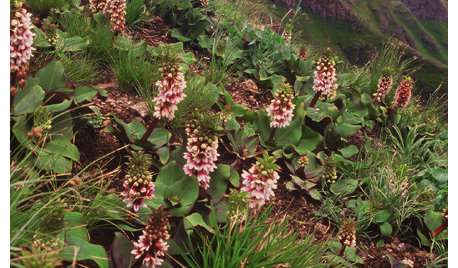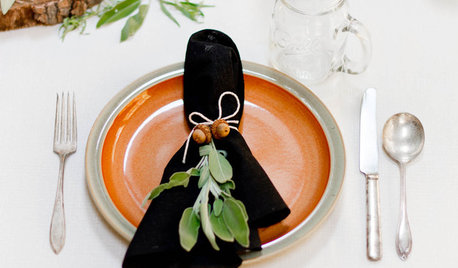Mmmmm... wild onions are here!
AustinApril
19 years ago
Related Stories

NATIVE PLANTSGreat Native Plant: Grow Wild Quinine for Its Unique Clusters of Blooms
Get connoisseur cred and unique blooms with this uncommon plant. Bonus assets: It’s low maintenance and drought tolerant
Full Story
GARDENING GUIDES3 Exotic Flowers From the South African Wild
Add an enticing note to a garden border or patio container with these sophisticated and memorable African plants
Full Story
FALL GARDENINGGreat Design Plant: Low-Maintenance Allium Cernuum
Nodding onion is a Mid-Atlantic native bulb with beautiful midsummer blooms
Full Story
FEEL-GOOD HOME21 Ways to Waste Less at Home
Whether it's herbs rotting in the fridge or clothes that never get worn, most of us waste too much. Here are ways to make a change
Full Story
KITCHEN DESIGNUsing White Marble: Hot Debate Over a Classic Beauty
Do you love perfection or patina? Here's how to see if marble's right for you
Full Story
ARCHITECTUREStates of Style: The Alaskan Frontier
All isn’t raw and rustic in this frontier state. See how nature’s influence meets eclectic style in Alaskan homes
Full Story
DECORATING GUIDESImprove Your Style Fortune With Lucky Bamboo
Serve this versatile plant straight up or with a twist for auspicious living decor that thrives without soil
Full Story
GARDENING GUIDESInvite Cellophane Bees to Your Garden by Providing Patches of Bare Soil
Look for cellophane bees (Colletes) pollinating flowering trees and shrubs in U.S. gardens this spring
Full Story

FARM YOUR YARDAdvice on Canyon Farming From L.A.'s Vegetable Whisperer
See how a screened garden house and raised beds help an edible garden in a Los Angeles canyon thrive
Full StoryMore Discussions






breezyb
ksrogers
Related Professionals
Barrington Hills Landscape Architects & Landscape Designers · Fort Lee Landscape Architects & Landscape Designers · Glen Ellyn Landscape Architects & Landscape Designers · Mitchellville Landscape Architects & Landscape Designers · Peabody Landscape Contractors · Eustis Landscape Contractors · Hollywood Landscape Contractors · Lemoore Landscape Contractors · Long Branch Landscape Contractors · Melrose Park Landscape Contractors · Pine Hills Landscape Contractors · San Carlos Park Landscape Contractors · Anchorage General Contractors · Country Club Hills General Contractors · Dallas General ContractorsAustinAprilOriginal Author
paquebot
AustinAprilOriginal Author
garnetmoth
ksrogers
AustinAprilOriginal Author
Jan_Hobbs
jimster
breezyb
coho
jimster
breezyb
billylee258
seysonn